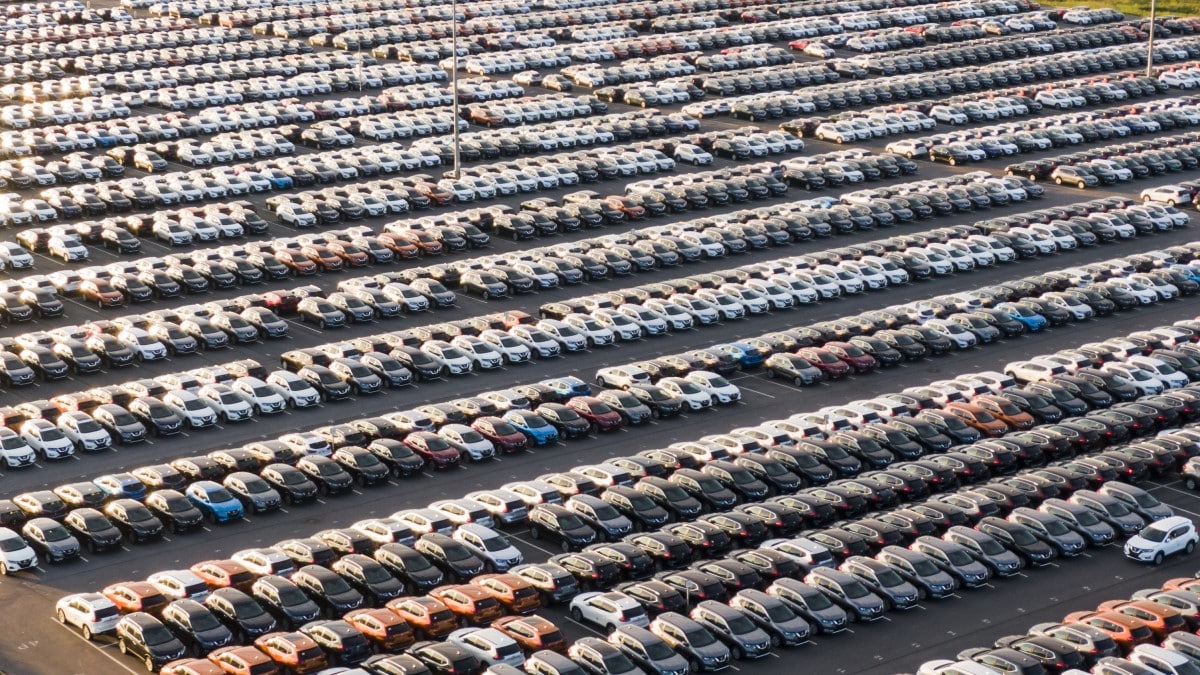
President Trump late Tuesday eased tariffs that had begun pushing up the prices of new cars. A pair of announcements from the White House reduced the impact of planned tariffs on car parts and granted automakers some relief from tariffs on metals.
The moves will not lower car prices or stop them from rising.
Three Rounds of Tariffs
In late March, the White House announced three rounds of tariffs affecting the prices of new cars.
One applied a 25% levy on all steel and aluminum goods imported into the U.S. Since most car parts include aluminum or steel, this raised the prices of the raw materials automakers use. But this round had the least impact of the three, because automakers already use much domestic metal.
A second, triggered in early April, increased the cost of any car imported from outside the U.S., Canada, or Mexico (and a small number of cars built in Mexico) by 25%.
A third, set to begin on Saturday, would add 25% to the cost of any car part imported from outside the U.S. Every car built in the U.S. uses some imported parts, so this would raise the price of all new cars.
The tariffs exempt cars made in Canada or Mexico as long as they comply with the terms of the U.S.-Mexico-Canada Agreement (USMCA), a trade deal Trump negotiated during his first term.
What Has Changed
Until yesterday, automakers paid both a 25% levy on each car imported and a 25% levy on metals used in its parts. In one order yesterday, Trump ended the so-called “stacking” of tariffs, meaning automakers will not pay the metals levy on top of the car tariff. But that move affects only automakers themselves, not the companies that make most parts (more on that in a moment).
In a second order, Trump created a temporary reimbursement program that will pay automakers back some of the cost of the parts tariff.
As long as a car is assembled in the U.S., the move exempts 15% of its parts from tariffs in the first year, and 10% in the second year. It provides no reimbursement after that.
In a fact sheet, the White House explains, “If a manufacturer builds a car in the U.S. that has 85% U.S. or USMCA content, the manufacturer effectively will not owe tariffs on that vehicle’s production for the first year.”
On a car built in the U.S. using 50% U.S. or USMCA content, the sheet says, “the manufacturer effectively only pays on 35% for the first year.”
What Has Not Changed
The move did not change a 25% levy on all finished cars imported from outside North America.
It does not prevent parts tariffs from further raising the prices of most new cars, though it blunts how much they will raise prices. Those tariffs are scheduled to take effect May 3.
And, though it exempts automakers from tariffs on metals, that may not have much practical impact.
Automakers buy most parts from suppliers. Trump’s move did not exempt supplies. The New York Times notes, “the rules do not appear to protect automakers from tariffs on steel and aluminum that their suppliers pay and pass on.”
In practice, the metals tariff may still raise the cost of most car parts.
Industry publication Automotive News adds, “Shipments will stop if customers don’t shoulder some of the expense or if suppliers have to wait too long for a payment. The tariffs will also put more pressure on cash flow after automotive companies coped with disruptions related to the pandemic and microchip shortage over the last few years.” Many suppliers are already running with little savings and cannot weather disruptions.
Two Years May Not Be Enough Time to Move Some Production
The White House characterized the moves as an attempt to bring manufacturing back to the U.S. However, the long-term nature of the car business makes it hard for any president, limited to four years, to do that.
Automakers cannot move production easily. They design most cars on cycles of seven years or longer, and sign contracts with suppliers for the entire production run of each car. They build new factories expecting to pay their cost over decades.
Two years of partial tariff refunds are unlikely to be enough to make moving factories profitable.
Sam Fiorani, analyst at AutoForecast Solutions, told Automotive News, “This is an industry that has built up with a global supply chain, and the tariffs don’t seem to take that into account.”
What Shoppers Should Know
Car prices are likely to continue to rise despite yesterday’s changes. They may ultimately rise less in some cases than they would have without.
Most car dealerships still have an inventory of cars imported at pre-tariff prices. Dealers may charge more for those than they otherwise would have, as they need to raise enough cash to pay higher replacement costs for each car they sell. However, some brands have several months’ worth of cars in stock, so that price changes will occur gradually.
If you’re in the market, the best way to track the changing price of a car you’re interested in is the Kelley Blue Book Fair Purchase Price. It reflects actual prices paid by recent buyers in your area. We update it weekly, ahead of the weekend shopping rush, to help you plan.

